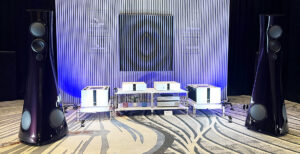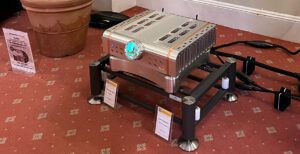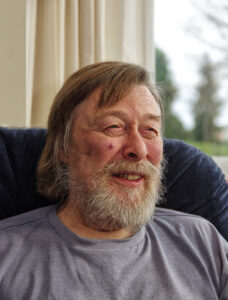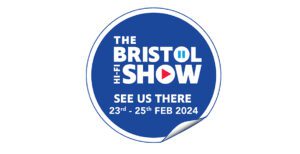
Hi-Fi+: How did you become interested in earphone and CIEM design in the first place? What attracted you to this product category?
JH: When I started designing IEMs in 1995 the category was brand new and only existed in the professional touring world. Wireless IEM systems had just been invented and the earpieces or IEMs were an afterthought—typically just a set of moving-coil/diaphragm speakers housed in a set of custom-moulded shells. At the time, the available IEMs had horrible frequency response and no headroom before distortion.
I was a touring sound engineer with major rock bands. I toured with Van Halen, Kiss, Morrisey, The Cult, Linkin Park, and many others. My gig was the monitor engineer (the sound engineer for the aristocrats on stage so they can hear themselves). In 1995, while starting a tour with Van Halen, we put Alex Van Halen on a set of CIEMs. He wasn’t pleased with the audio quality and asked me to find better ones.
Hi-Fi+: As you work to create new top-tier earphone/CIEM products, what are the top design objectives you try to bear in mind?
JH: Since 1995, when I designed the world’s first multi-driver CIEM, my design goal has been to make a perfect sounding CIEM. What I learn from every new design builds on what I learned from the design before. I always try to perfect a new model by correcting or overcoming the deficiencies in the previous design.

Hi-Fi+: What technologies and product configurations best enable you to meet your design objectives?
JH: Dual and quad balanced armature drivers work the best for my desired results these days. Quads are actually the better drivers as they open up more options for crossover design. We were just granted a patent on the dual high driver earphone, which applies to the quad high driver earphone also. One of the most important breakthroughs I developed recently is the Freqphase waveguide. All balanced armature drivers have a different impulse time. It wasn’t as bad with the old school single balanced armature drivers, but it is impossible to build a phase coherent IEM without making sure sounds from the drivers all arrive within .01ms of each other. We just received the patent for Freqphase also.
Hi-Fi+: What is your assessment of the comparative merits of universal-fit vs. custom-fit in-ear designs?
JH: It depends on whose universal-fit pieces we are talking about. If the universal-fit IEM is designed with multiple drivers, especially dual or quad drivers, and the main concern is a small size earpiece it is impossible to have a phase correct IEM. If it the CIEM or universal-fit earphone is not in time and phase correct it impacts the soundstage, frequency response and overall user enjoyment.
The JH Audio universals all have the Freqphase waveguide so they are phase correct like our custom models they derive from. So with my IEMS the only difference between custom and universal-fit model would be the consistency of the bass response due to the fit. Universals sometimes can lose a little bass response if they don’t have a proper seal. This is not an issue with a good fitting custom.
Hi-Fi+: Do you favour particular types of drive units for use in your designs and, if so, why?
JH: Once again (I favour) quad balanced armature drivers as they give me more options for crossover design and the quads allow me to get the too end extension that is lacking in most IEMs.

Hi-Fi+: How would you describe the ideal voicing ‘target curve’ for an earphone or CIEM?
JH: The ideal curve would be transparent and perfectly accurate on an FFT (Fast Fourier Transform) analysis from 10Hz to 20kHz, with variable-level bass output. No one can agree on the proper amount of bass response but everyone wants the earpiece to reproduce exactly what the audio source is without a hyped curve. I finally achieved this with the Layla—a mastering quality IEM with bass adjustable from board flat to +13db at 60Hz.
Hi-Fi+: What do you consider your top one or two earphone/CIEM product design achievements thus far? What makes those products special from your point of view?
JH: Speaking more of enabling technologies I’ve developed, I’d say I’m proud of my dual drivers, quad drivers, and the Freqphase waveguide.

Hi-Fi+: When you listen for personal enjoyment, what types of music do you enjoy?
JH: Old school classic rock, Motown, hard rock, and some country.
Hi-Fi+: What do you think the high-performance earphone/CIEM marketplace will be like five years from now?
JH: To keep innovating, all geared toward high resolution listening. And I’m positive we will be leading the industry in innovation and development.
Tags: FEATURED
By Chris Martens
More articles from this authorRead Next From Blog
See all
AXPONA 2024 Show Report Part One
- Apr 19, 2024

Audio Show Deluxe 2024: A photo show report
- Mar 28, 2024

Paul Messenger 1949-2024: A personal tribute
- Mar 26, 2024

Bristol Hi-Fi Show 2024: See You There!
- Feb 21, 2024










